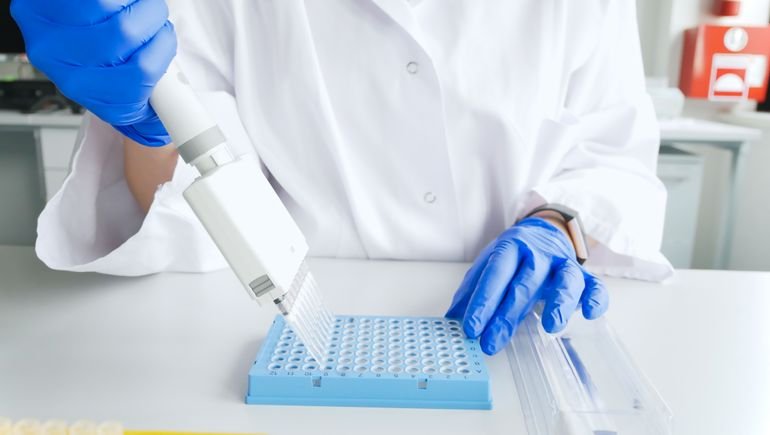Six emerging trends in oncology R&D

Cancer exacts a heavy societal toll. In 2020 there were more than 1.6 million new diagnoses and 600,000 deaths, earning the disease priority funding status. While other research areas work with meager budgets, there is little need for belt-tightening in cancer research.
Oncology dominates the biopharma pipeline, with cancer-focused companies raising $7 billion in 2020, compared to $160 million by antibiotics developers.
But there have been some noteworthy shifts in where and how oncology drug-development dollars are spent, according to a report by The IQVIA Institute.
The field’s gold status has led to innovations, and the introduction of 134 unique cancer treatments in the last decade, according to IQVIA. And now that much of the low-hanging fruit has been picked, drug developers are shifting their focus to areas of unmet need, such as rare diseases.
Here are six trends outlined in the IQVIA report that explain how the industry is evolving.
China is moving up the ranks in oncology R&D
China surpassed Europe’s share of the global oncology pipeline in 2022, reaching 23% of the total drugs in development. China’s spending on cancer drugs grew by $6.8 billion in the last five years and its overall drug market, now second only to the U.S., is expected to reach $111 billion by 2025.
While some of its investigational cancer drugs are likely bound for the local market, some Chinese companies, such as BeiGene and Zai Lab are strategizing to bring products to the global marketplace.
Small companies are leading the way
Increasingly, small biopharma companies — those spending less than $200 million a year in R&D with less than $500 million in annual sales — are driving cancer innovation and drug development at a higher rate. All told, investigational drugs from emerging companies made up 71% of the oncology pipeline in 2022, an over 20% increase from six years ago.
Smaller companies often partner with Big Pharma only after their products are on the verge of approval or over the finish line, according to the report.
“The overall fundamental patterns in oncology are robust and expected to continue.”

Michael Kleinrock
Lead research director, IQVIA Institute for Human Data Science
Historic growth continues
The number of new oncology trials remained at historically high levels in 2022. The bulk of these new trials, which have increased by 22% since 2018, primarily target rare cancers and solid tumors, but blood cancer research also picked up steam. The number of blood cancer trials grew 30% between 2017 and 2022, although they make up a small share of overall oncology trials.
Companies are aiming for novel targets
Drug developers are venturing off the well-trodden path and shifting toward targeted therapies and novel drugs, such as antibody-drug conjugates, cell and gene therapies, bispecific antibodies, and CAR-T cell therapies.
The COVID-19 pandemic also left behind at least one positive legacy, said Michael Kleinrock, lead research director for the IQVIA Institute for Human Data Science.
“The investment flows into mRNA-based cancer treatments have increased largely as a result of the success of COVID vaccines,” he said.
Checkpoint inhibitors are taking a back seat
As novel drug targets take center stage, R&D interest in the blockbuster category of check-point-inhibitor drugs is waning due, in part, to a crowded market. While the number of new trials for PD-1 and PD-L1 drugs, like Keytruda and Tecentriq, grew 54% in the last five years, most of them in China, there was an 11% drop in the number of trials between 2021 and 2022.
Even so, this class of drugs is still widely used and can sway the market. Kleinrock said that innovation, and the continued growth and increased use of PD-1 and PD-L1s and other checkpoint inhibitors increased five-year compounded annual growth rate market predictions from 9% to 12% in last year’s IQVIA report to 12% to 15% in this report.
Industry challenges remain
The focus on cutting-edge drugs and big scientific leaps might pay off, but it does have a downside — more drug failures. The composite success rate for oncology drugs (a measure of how successful drugs are at moving through the development pipeline) was 5% in 2021 but ticked down further to 3.5% in 2022.
The industry is also falling short in other areas, particularly in addressing disparities among different groups, the report said. While Black cancer patients die from the disease at a 12% higher rate than other demographic groups, they are still underrepresented in oncology trials. On average, global trials between 2020 and 2022 included less than 3% Black/African American patients and only 5.9% Hispanic patients. The report noted that studies recruited only in the U.S. were more diverse than those that recruited outside the U.S.
In addition, access to cancer drugs is limited in many areas of the world, despite a 5% increase in the number of patients who received cancer treatment globally over the past five years.
Ultimately, the outlook for cancer patients is increasingly positive with more options for more patients on the horizon, Kleinrock said.
“The overall fundamental patterns in oncology are robust and expected to continue,” he said.
Source link
#emerging #trends #oncology